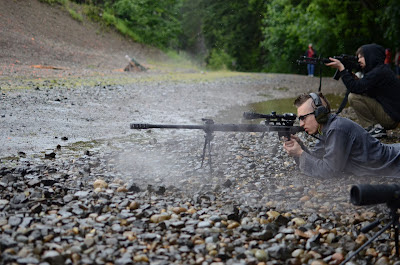The next stage of mech design is actually designing the steel structure of it's feet and legs. This will also be my first trip into the land of structural engineering.
So how beefy do those feed need to be? Let's assume for now that we've got the center of mass at the center of the mech, 4' from the leg. And let's assume the feet extend 6' into the center. Given a 2000 lb mech, we now have 8000 ftlbs of torque and 1333 lbs of force felt on those foot spikes that extend toward the center and keep the mech from falling to one side of the other when it lifts a foot. Let's call that part the 'toe'.
If we assume there are two main bars in that support the toe and the foot is 1' high, the angle made by the bars is 9.5degrees. That works out to some 8110lbs of compression force felt by that top bar. The bottom bar will feel a tension force of about the same. Now the question is: what kind of bar do we need to handle that?
According to me metal supplier, onlinemetals.com, is takes ~60,200 psi to distort 316 grade stainless steel. (I'll probably not be able to make this thing entirely in stainless, but I like to dream) If I use a 1" diameter rod of stainless steel, it can hold 47,280 lbs. So that's more than enough.
That doesn't like it would be enough to hold 1 ton of mech at a bad angle does it? I suspect that my mind has a biased view of the strength of steel because I so often interact with tube steel rather than solid rods of it. Hold a solid 1" diameter rod and it's almost surprising that anything could break it.
So Now what about the ankle joint? There's a single rod that has to hold the foot to the leg. That rod must take the entire torque of holding the mech up. What kind of rod do I need there to keep it from sheering off with the force?
If we assume the leg supports are 6" apart (and remember, we now have 4 bones for each leg section), and apply the 8000 ftlbs of torque to it we come up with 16,000 lbs of sheering force on the bolt.
According to wikipedia, steel's sheer force is about 0.75 of the yield force. That comes out to 45,150 psi. If we use a 2" bolt here, it comes out to 3.1415 cubic inches of area and 141,842 lbs of sheer strength.
By the numbers we could use a 1" bolt with a sheer strength of 35,460 lbs but that's dangerously close to our 16,000 lbs limit. If we saw shock from ground impact or slipping, has temperature effects, or generally just mis-calculated that bolt could sheer and the mech would fall over. In reality, I'm probably going to use a 2" bolt for the ankle and maybe 3"x0.25" angle iron for the feet.
Of course, as always, I have no idea what I'm doing here. Thank science for textbooks and the internet...





